If you enjoy reading this blog, please post a review on WealthTender. Thank you!
“The inevitable is that unprepared for.” ― Samuel R. Delany, Nova
“To think creatively, we must be able to look afresh at what we normally take for granted” ― George Keller
Central banks were ill prepared for covid but then several decades of disinflation had made them and many others complacent
We take it for granted that nature is harsh and that animals in the wild will continue to fall victim to predators or to their environment as they always have. And yet, we humans believe we have a unique ability to learn from the past, from our mistakes. Perhaps we have too high an opinion of ourselves.
Take inflation.
The high inflation from the mid-60s to 1980 was rooted in unnecessarily loose fiscal policy from 1965-1969. Furthermore, it was accepted economic theory at the time that fiscal stimulus in the face of firm private demand was inflationary. So, why did we fail to recognise that, once private demand had recovered towards the end of 2020 following a sharp contraction in the second quarter, further fiscal stimulus would be highly inflationary?
Before I tackle this question in greater detail, below is a brief timeline of inflation in the US and elsewhere over the last 70 or so years:
- H1 1960s: Healthy economic growth with low, steady inflation. Policymakers begin to think fiscal policy is too restrictive.
- H2 1960s: Fiscal stimulus in US is excessive. Inflation rises from around 1pct in early 1965 to 6.4pct in Feb 1970. Fed Funds rate increased from 4pct to 9pct over the same period, eventually precipitating a moderate recession in 1969-70.
- 1970-72: US inflation falls back to around 3pct by 1972 but then starts to increase again.
- 1972-1980: Inflation remains elevated, exacerbated by the two oil shocks of 1973 and 1979. In the US inflation reaches a high of 15pct in March 1980.
- 1980-1982: High interest rates start to bring inflation down to mid single digits, but at a cost: a recessionary environment that lasts for three years or so.
- 1990s-2000s: Other structural forces such as demographics and technology put further downward pressure on inflation, allowing financial bubbles to inflate. The bubbles burst in 2008, resulting in deflation and rapid expansion in central banks' balance sheets aka QE.
- 2010s-2020: A depression is averted and order is restored: inflation returns to a steady, comfortable 2pct level.
- 2015-2022: Protectionism is on the rise. In 2015, Beijing announces its "Made in China 2025" policy. As part of his "America First" policy, US president Trump imposes tariffs on various products in 2018. In response, US trading partners introduce retaliatory tariffs. In 2020 India bans TikTok and 58 other Chinese phone apps. In August 2022, the US signs into law the CHIPS Act - aka the Creating Helpful Incentives to Produce Semiconductors for America Act - designed to reduce reliance on Chinese made semiconductors.
- 2020: Covid induces a massive contraction in demand in early 2020 - inflation falls sharply to just above 0pct in May 2020. Massive fiscal and monetary stimulus enables demand to recover somewhat and inflation to bounce back and stay around 1pct for the remainder of 2020. Covid also induces a massive contraction in supply. Having risen sharply in Q2, bonds start to fall.
- 2021: Inflation starts to rise sharply. However, the rise is deemed by policymakers to be related to supply issues which are expected to be resolved. In other words, the higher inflation is deemed to be transitory, so fiscal and monetary policy remain highly stimulatory. Bonds continue to fall.
- H1 2022: In Dec 2021 policymakers acknowledge that high inflation is not transitory but caused by ultra loose fiscal and monetary policy in 2021 in combination with supply side issues. Russia's invasion of Ukraine in Feb 2022 sends oil and gas prices higher, putting further upward pressure on inflation. Equity markets fall. Bonds continue to fall.
- Mid-2022: Inflation shows very tentative signs of moderating. Equities recover in the belief that the tightening cycle may end in H1 2023 and that a hard landing can be averted. Fiscal policy remains accommodative. US president Biden forgives student debt. Prime minister candidate Truss says her proposed tax cuts will reduce inflation. Criticism of central banks' poor inflation forecasting intensifies, leading to their independence being threatened.
- 27 August 2022: Fed chairman Jerome Powell's speech at Jackson Hole brings a dose of reality back to financial markets. A hard landing scenario is back on the table. Equities fall sharply.
Over the weekend I re-read Jerome Powell's 2020 and 2021 Jackson Hole speeches, as well as various FOMC statements/minutes/transcripts since mid-2020, to see if:
a.) any concern was expressed in Q3 2020 that inflation, having by then recovered to around 1pct from 0pct in May, might at some point rise further as a result of employment having started to recover, ongoing supply issues, and prevailing loose fiscal and monetary policy, and
b.) there were any signs of complacency in mid 2021 in the face of the sharp rise in inflation from around 1pct in late 2020 to above 5pct in June 2021 - at the time this rise had been deemed transitory.
The transcript of Powell's press conference following the end July 2020 FOMC meeting is quite instructive:
"In terms of inflation, I don’t know. I mean, I—you know, I think, fundamentally, this is a disinflationary shock. I know there—there is a lot of discussion about how this might lead to inflation over time, but, you know, we’re—we’re seeing disinflationary pressures around the world going into this. Now we see a big shock to demand, and we see core inflation dropping to 1 percent. And I do think for quite some time we’re going to be struggling against disinflationary pressures rather than against inflationary pressures."
On the basis that "for quite some time" means years rather than months, Powell was clearly wrong - inflation began to shoot up just a few months later in March 2021. But he was far from being the only central banker or indeed economist to misjudge things - hardly anyone foresaw what lay ahead.
However, there were some who got it right. In a 23 July 2020 op-ed, University of Oregon economics professor Tim Duy wrote that the Fed has a history of being behind the curve and that it may not recognise inflation until it's too late. Ouch.
Even earlier, on 3 July, Teun Draaisma and Ben Funnell, co-portfolio managers on Man Group’s DNA team, penned an op-ed titled Inflation is coming in which they wrote:
*"The shift from disinflation to inflation that we now anticipate is not a direct result of the coronavirus crisis – many reflationary policy changes were already being put in place – but the scale of the central bank response to coronavirus, combined with a huge fiscal stimulus and “helicopter money”, will, we believe, accelerate and accentuate these pressures. The numbers attached to coronavirus bailouts are clearly astronomical, and it is clear that governments have decided on a ‘whatever it takes’ approach to spending their way out of the slowdown in the short term.
"But thereafter will they be able to wean themselves off deficit spending financed by central bank balance sheets? We suggest not – after all, which Finance Minister is going to be first to re-impose austerity on the doctors, nurses, tube and train drivers and gig economy workers who have literally just kept our economy and our lives going?"*
It does seem odd that The Fed - and other central banks - in the face of a threat that was obvious to some and for good reason, would not at least have hedged their bets. The July 2020 FOMC minutes noted that the Fed staff's outlook was for inflation to pick back up over 2021 and 2022 i.e., back to around 2pct. The minutes also noted an alternative scenario in which in 2021 there was a "decrease in real GDP, a jump in the unemployment rate, and renewed downward pressure on inflation".
Could the committee not have noted a second alternative scenario in which the prevailing and obvious conditions at the time - massive fiscal/monetary stimulus, supply constraints, unemployment that had fallen from 14.7pct in April to 10.2pct in July and was clearly on a downward trajectory etc. - might just possibly lead to inflation rising sharply in 2021? FOMC participants are among the best economists on the planet, with every piece of data at their fingertips. And yet, not a single one suggested the possibility.
When inflation did start to rise sharply in March 2021, it was deemed by the Fed - and other central banks - that the rise would be temporary, in the Fed's words, transitory. Why was this?
The word transitory first entered the Fed's lexicon in March 2021. There were two uses of it in the FOMC March meeting minutes: Following the transitory increase this year, inflation was projected to run a bit below 2 percent next year and then to reach 2 percent by 2023 and After the transitory effects of these factors fade, however, participants generally anticipated that annual inflation readings would edge down next year.
Bear in mind that by March 2021 US unemployment had fallen to 6.0pct, that fiscal and monetary policy were still ultra loose, and that there were still supply issues.
To be fair, the number of mentions of the word inflation in the FOMC minutes had increased from 31 in July 2020 to 58 in March 2021, and the alternative deflation scenario noted previously had been removed. However, the opportunity to hedge bets and to suggest that there just might be an alternative scenario in which massive fiscal/monetary stimulus, a rapidly tightening labour market, and ongoing supply constraints led to higher than expected inflation was not taken.
The closest the March 2021 minutes got to a mention of the possibility of higher than expected inflation was:
Most participants noted that they viewed the risks to the outlook for inflation as broadly balanced. Several remarked that supply disruptions and strong demand could push up price inflation more than anticipated. Several participants commented that the factors that had contributed to low inflation during the previous expansion could again exert more downward pressure on inflation than expected.
Throughout the rest of 2021, inflation continued to climb higher, from 2.6pct in March to 7.1pct in December. As a result, at the December 2021 FOMC meeting, it was announced that there would be no more use of the word transitory in relation to inflation:
As elevated inflation had persisted for longer than they had previously anticipated, members agreed that it was appropriate to remove the reference to “transitory” factors affecting inflation in the post-meeting statement and instead note that supply and demand imbalances have continued to contribute to elevated inflation.
Furthermore, it wasn't until the second quarter of 2022 that The Fed finally started to shrink its balance sheet, a balance sheet that had expanded from $7tr in July 2020 when inflation was 1.0pct to $9tr in March 2022 when inflation had reached 8.6pct. Might it not have been justified in starting this just a little earlier?
Last month, perhaps unfairly, Powell was deemed by financial markets to have signalled a pivot towards interest rate cuts. Having fallen throughout the first half of 2022, equity markets in fact began to recover in mid-June, perhaps because Powell and other Fed officials were saying that a path to a soft landing was still possible and therefore that unemployment would not have to rise in order for inflation to fall. Markets may have latched onto the fact that the July minutes were still peddling this belief. Rather bizarrely, there was not a single mention of the word recession in either the FOMC minutes, the statement, or the press conference transcript.
Last week, Powell used his Jackson Hole speech to bring some reality back to financial markets, stating that, in relation to the high inflation, the Fed "must keep at it until the job is done". There had also finally been concessions that unemployment might have to rise in order to bring inflation down.
It seems that The Fed has made one mistake after another, not so much in getting its central scenarios wrong - though it clearly has - but in terms of not taking the opportunity to make an explicit mention of alternative scenarios in which inflation might be higher than expected.
I do not understand why this is. Perhaps the Fed was under huge political pressure not to mention the possibility that interest rates might have to rise in the face of a pandemic that had ruined or severely impacted many people's lives. Perhaps The Fed's models were wrong. Perhaps the models were right but FOMC members ignored them. Perhaps because post-2008 QE-related inflation fears did not materialise so fears of high inflation in general had subsided. Perhaps because the 70s were so long ago that nobody remembered a) that high inflation can happen and persist and b) how awful the consequences of high inflation are.
Also, while this post has focussed on The Fed, other central banks got things just as wrong. In May 2021, ECB president Christine Lagarde dismissed inflation pressures as temporary. As late as August last year Bank of England governor Andrew Bailey said that the inflation rise would be temporary. As for the Bank of Japan, it can be forgiven for welcoming the possibility that the three decades of deflation pressures might finally be a thing of the past.
I worry about the continued use by central banks of the term data dependency. It implies that policy is a function of the past not of the future - a future, it should noted, that their models are designed to predict.
I worry that because of their mistakes, central banks have lost credibility and that this has led to politicians putting their independence back on the agenda. It seems nuts to me that one would want, effectively, the responsibility for monetary policy to be in the hands of those who need to garner votes from the public.
I worry that the only thing that will bring inflation down is a nasty recession but also that, given the move towards de-globalisation and protectionism, a world of generally high inflation may be around for a number of years. It was only a matter of time before the developing world got fed up with being the advanced world's factory and being paid a pittance for the privilege.
Of course, for investors, worry also means opportunity.
The views expressed in this communication are those of Peter Elston at the time of writing and are subject to change without notice. They do not constitute investment advice and whilst all reasonable efforts have been used to ensure the accuracy of the information contained in this communication, the reliability, completeness or accuracy of the content cannot be guaranteed. This communication provides information for professional use only and should not be relied upon by retail investors as the sole basis for investment.


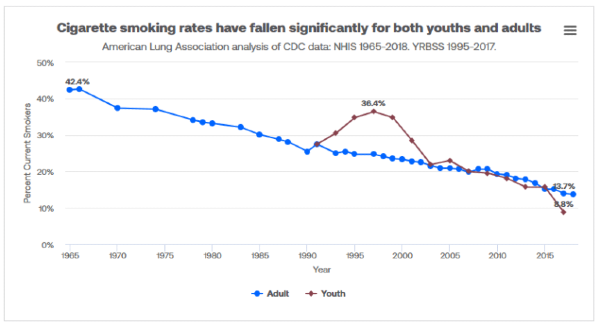
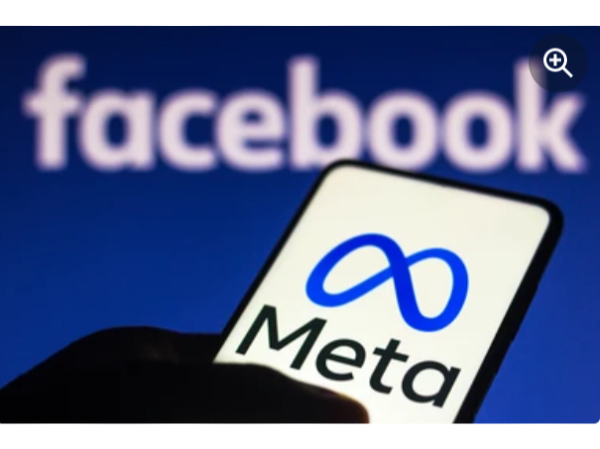



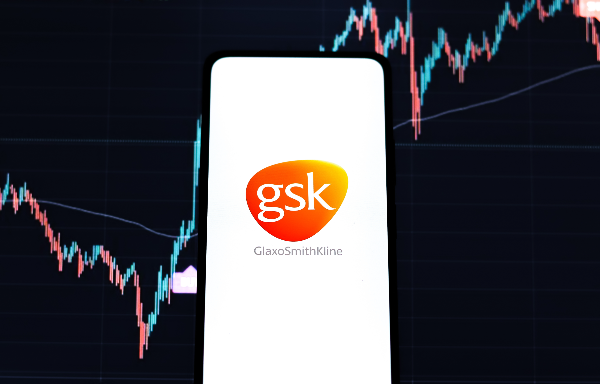



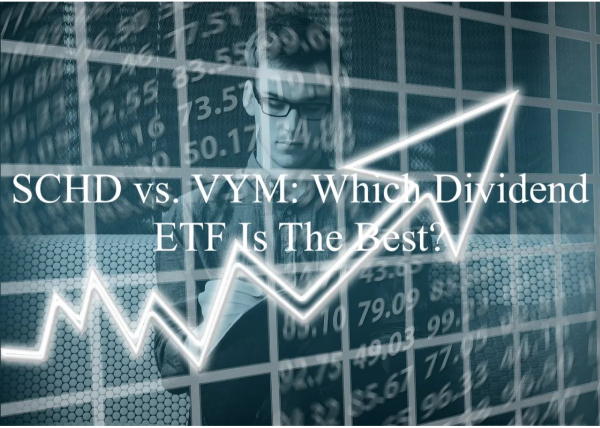
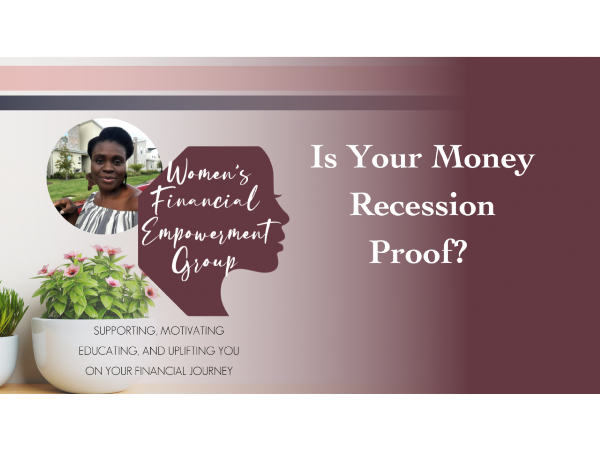





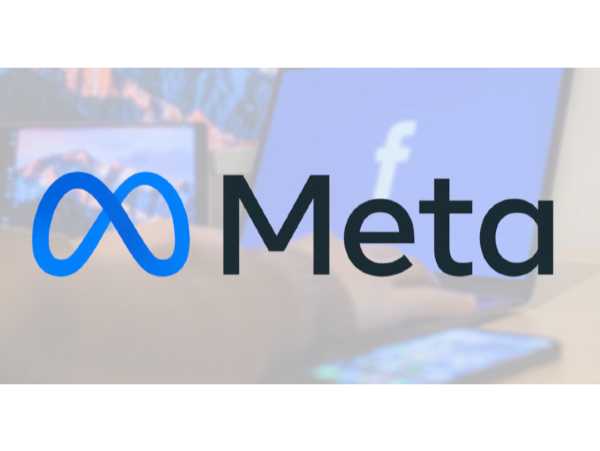
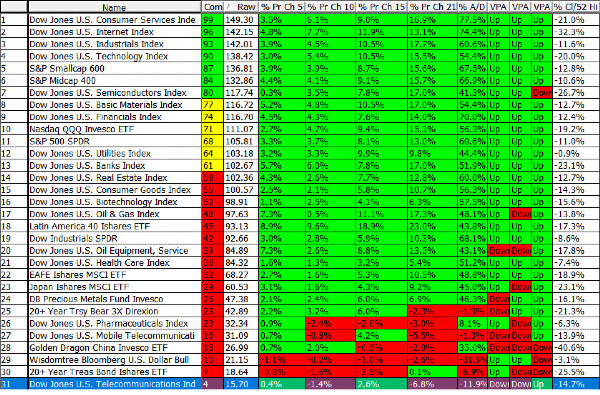










If you enjoy reading this blog, please post a review on WealthTender. Thank you!
“The inevitable is that unprepared for.” ― Samuel R. Delany, Nova
“To think creatively, we must be able to look afresh at what we normally take for granted” ― George Keller
Central banks were ill prepared for covid but then several decades of disinflation had made them and many others complacent
We take it for granted that nature is harsh and that animals in the wild will continue to fall victim to predators or to their environment as they always have. And yet, we humans believe we have a unique ability to learn from the past, from our mistakes. Perhaps we have too high an opinion of ourselves.
Take inflation.
The high inflation from the mid-60s to 1980 was rooted in unnecessarily loose fiscal policy from 1965-1969. Furthermore, it was accepted economic theory at the time that fiscal stimulus in the face of firm private demand was inflationary. So, why did we fail to recognise that, once private demand had recovered towards the end of 2020 following a sharp contraction in the second quarter, further fiscal stimulus would be highly inflationary?
Before I tackle this question in greater detail, below is a brief timeline of inflation in the US and elsewhere over the last 70 or so years:
Over the weekend I re-read Jerome Powell's 2020 and 2021 Jackson Hole speeches, as well as various FOMC statements/minutes/transcripts since mid-2020, to see if:
a.) any concern was expressed in Q3 2020 that inflation, having by then recovered to around 1pct from 0pct in May, might at some point rise further as a result of employment having started to recover, ongoing supply issues, and prevailing loose fiscal and monetary policy, and
b.) there were any signs of complacency in mid 2021 in the face of the sharp rise in inflation from around 1pct in late 2020 to above 5pct in June 2021 - at the time this rise had been deemed transitory.
The transcript of Powell's press conference following the end July 2020 FOMC meeting is quite instructive:
"In terms of inflation, I don’t know. I mean, I—you know, I think, fundamentally, this is a disinflationary shock. I know there—there is a lot of discussion about how this might lead to inflation over time, but, you know, we’re—we’re seeing disinflationary pressures around the world going into this. Now we see a big shock to demand, and we see core inflation dropping to 1 percent. And I do think for quite some time we’re going to be struggling against disinflationary pressures rather than against inflationary pressures."
On the basis that "for quite some time" means years rather than months, Powell was clearly wrong - inflation began to shoot up just a few months later in March 2021. But he was far from being the only central banker or indeed economist to misjudge things - hardly anyone foresaw what lay ahead.
However, there were some who got it right. In a 23 July 2020 op-ed, University of Oregon economics professor Tim Duy wrote that the Fed has a history of being behind the curve and that it may not recognise inflation until it's too late. Ouch.
Even earlier, on 3 July, Teun Draaisma and Ben Funnell, co-portfolio managers on Man Group’s DNA team, penned an op-ed titled Inflation is coming in which they wrote:
*"The shift from disinflation to inflation that we now anticipate is not a direct result of the coronavirus crisis – many reflationary policy changes were already being put in place – but the scale of the central bank response to coronavirus, combined with a huge fiscal stimulus and “helicopter money”, will, we believe, accelerate and accentuate these pressures. The numbers attached to coronavirus bailouts are clearly astronomical, and it is clear that governments have decided on a ‘whatever it takes’ approach to spending their way out of the slowdown in the short term.
"But thereafter will they be able to wean themselves off deficit spending financed by central bank balance sheets? We suggest not – after all, which Finance Minister is going to be first to re-impose austerity on the doctors, nurses, tube and train drivers and gig economy workers who have literally just kept our economy and our lives going?"*
It does seem odd that The Fed - and other central banks - in the face of a threat that was obvious to some and for good reason, would not at least have hedged their bets. The July 2020 FOMC minutes noted that the Fed staff's outlook was for inflation to pick back up over 2021 and 2022 i.e., back to around 2pct. The minutes also noted an alternative scenario in which in 2021 there was a "decrease in real GDP, a jump in the unemployment rate, and renewed downward pressure on inflation".
Could the committee not have noted a second alternative scenario in which the prevailing and obvious conditions at the time - massive fiscal/monetary stimulus, supply constraints, unemployment that had fallen from 14.7pct in April to 10.2pct in July and was clearly on a downward trajectory etc. - might just possibly lead to inflation rising sharply in 2021? FOMC participants are among the best economists on the planet, with every piece of data at their fingertips. And yet, not a single one suggested the possibility.
When inflation did start to rise sharply in March 2021, it was deemed by the Fed - and other central banks - that the rise would be temporary, in the Fed's words, transitory. Why was this?
The word transitory first entered the Fed's lexicon in March 2021. There were two uses of it in the FOMC March meeting minutes: Following the transitory increase this year, inflation was projected to run a bit below 2 percent next year and then to reach 2 percent by 2023 and After the transitory effects of these factors fade, however, participants generally anticipated that annual inflation readings would edge down next year.
Bear in mind that by March 2021 US unemployment had fallen to 6.0pct, that fiscal and monetary policy were still ultra loose, and that there were still supply issues.
To be fair, the number of mentions of the word inflation in the FOMC minutes had increased from 31 in July 2020 to 58 in March 2021, and the alternative deflation scenario noted previously had been removed. However, the opportunity to hedge bets and to suggest that there just might be an alternative scenario in which massive fiscal/monetary stimulus, a rapidly tightening labour market, and ongoing supply constraints led to higher than expected inflation was not taken.
The closest the March 2021 minutes got to a mention of the possibility of higher than expected inflation was:
Most participants noted that they viewed the risks to the outlook for inflation as broadly balanced. Several remarked that supply disruptions and strong demand could push up price inflation more than anticipated. Several participants commented that the factors that had contributed to low inflation during the previous expansion could again exert more downward pressure on inflation than expected.
Throughout the rest of 2021, inflation continued to climb higher, from 2.6pct in March to 7.1pct in December. As a result, at the December 2021 FOMC meeting, it was announced that there would be no more use of the word transitory in relation to inflation:
As elevated inflation had persisted for longer than they had previously anticipated, members agreed that it was appropriate to remove the reference to “transitory” factors affecting inflation in the post-meeting statement and instead note that supply and demand imbalances have continued to contribute to elevated inflation.
Furthermore, it wasn't until the second quarter of 2022 that The Fed finally started to shrink its balance sheet, a balance sheet that had expanded from $7tr in July 2020 when inflation was 1.0pct to $9tr in March 2022 when inflation had reached 8.6pct. Might it not have been justified in starting this just a little earlier?
Last month, perhaps unfairly, Powell was deemed by financial markets to have signalled a pivot towards interest rate cuts. Having fallen throughout the first half of 2022, equity markets in fact began to recover in mid-June, perhaps because Powell and other Fed officials were saying that a path to a soft landing was still possible and therefore that unemployment would not have to rise in order for inflation to fall. Markets may have latched onto the fact that the July minutes were still peddling this belief. Rather bizarrely, there was not a single mention of the word recession in either the FOMC minutes, the statement, or the press conference transcript.
Last week, Powell used his Jackson Hole speech to bring some reality back to financial markets, stating that, in relation to the high inflation, the Fed "must keep at it until the job is done". There had also finally been concessions that unemployment might have to rise in order to bring inflation down.
It seems that The Fed has made one mistake after another, not so much in getting its central scenarios wrong - though it clearly has - but in terms of not taking the opportunity to make an explicit mention of alternative scenarios in which inflation might be higher than expected.
I do not understand why this is. Perhaps the Fed was under huge political pressure not to mention the possibility that interest rates might have to rise in the face of a pandemic that had ruined or severely impacted many people's lives. Perhaps The Fed's models were wrong. Perhaps the models were right but FOMC members ignored them. Perhaps because post-2008 QE-related inflation fears did not materialise so fears of high inflation in general had subsided. Perhaps because the 70s were so long ago that nobody remembered a) that high inflation can happen and persist and b) how awful the consequences of high inflation are.
Also, while this post has focussed on The Fed, other central banks got things just as wrong. In May 2021, ECB president Christine Lagarde dismissed inflation pressures as temporary. As late as August last year Bank of England governor Andrew Bailey said that the inflation rise would be temporary. As for the Bank of Japan, it can be forgiven for welcoming the possibility that the three decades of deflation pressures might finally be a thing of the past.
I worry about the continued use by central banks of the term data dependency. It implies that policy is a function of the past not of the future - a future, it should noted, that their models are designed to predict.
I worry that because of their mistakes, central banks have lost credibility and that this has led to politicians putting their independence back on the agenda. It seems nuts to me that one would want, effectively, the responsibility for monetary policy to be in the hands of those who need to garner votes from the public.
I worry that the only thing that will bring inflation down is a nasty recession but also that, given the move towards de-globalisation and protectionism, a world of generally high inflation may be around for a number of years. It was only a matter of time before the developing world got fed up with being the advanced world's factory and being paid a pittance for the privilege.
Of course, for investors, worry also means opportunity.
The views expressed in this communication are those of Peter Elston at the time of writing and are subject to change without notice. They do not constitute investment advice and whilst all reasonable efforts have been used to ensure the accuracy of the information contained in this communication, the reliability, completeness or accuracy of the content cannot be guaranteed. This communication provides information for professional use only and should not be relied upon by retail investors as the sole basis for investment.
Originally Posted on chimpinvestor.com